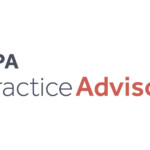James Zou, a professor of medical data science at Stanford University, made a discovery indicating that artificial intelligence (A.I.) systems exhibit a higher rate of false positives when analyzing text from non-native English speakers. The study aimed to evaluate the accuracy of A.I. detectors by utilizing essays from eighth-graders and non-native English speakers in the United States. It revealed that 61% of human-written TOEFL essays were mistakenly classified as A.I. generated, despite the detectors’ proficiency in identifying texts by native English speakers.
As A.I. technology increasingly integrates into the educational landscape, Zou’s research highlights a significant challenge. The unreliability of A.I. detectors poses a threat to students, especially those learning a second language, who may face unwarranted accusations of plagiarism. The question arises: how can educators prevent students from using A.I. tools to cheat on assignments and exams, particularly as large language models (LLMs) advance rapidly with uncertain detection methods?
According to Alex Bowers, an education management professor at Teachers College, Columbia University, distinguishing genuine student work from A.I.-assisted writing is a complex task. He advises teachers to exercise caution when suspecting A.I. involvement in student submissions, considering factors like fluency in English or the use of LLMs.
Erik Voss, Bowers’ colleague at Teachers College and an expert in linguistic analysis and English teaching, points out the challenge in assessing the extent of A.I. assistance in writing assignments. While tools like Microsoft Word offer automated writing support, the use of A.I. in academic writing remains less scrutinized compared to other applications like chatbots.
Voss emphasizes the need for educators to reassess the value of assessments and writing tasks in the context of A.I. assistance. He questions how reliance on A.I. impacts students’ development as independent writers and critical thinkers.
Despite the complexities surrounding A.I. integration in education, Voss and Bowers agree that collaboration between educators and students is crucial in navigating these challenges while meeting educational objectives.
Bowers incorporates A.I. tools in his classes for future educators, emphasizing the importance of engaging with technology while being mindful of inherent biases in A.I. models. He highlights how A.I. designs, trained predominantly on Western data, may perpetuate biases in language and representation if not critically examined.
Acknowledging the potential benefits of A.I. in language learning, Bowers suggests that these tools can aid students in expanding their vocabulary and understanding language nuances, particularly for non-native speakers.
In conclusion, Voss underscores the need for open dialogue among educators to determine the appropriate use of A.I. in educational settings and the true value it brings to the learning experience.






